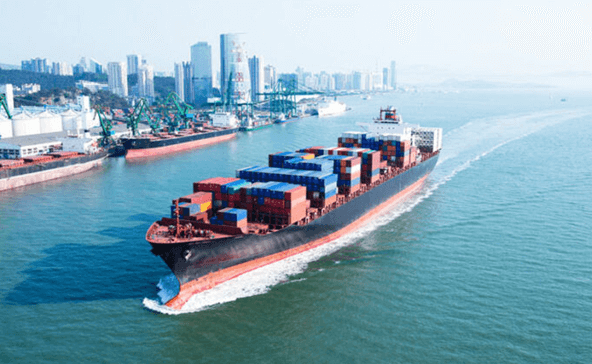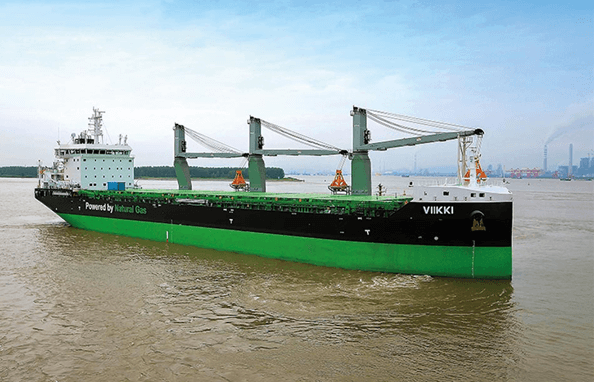Maritime sustainability is noticeably to be the most challenging and critical issue that the industry is facing in the coming years. Maritime used to take sustainability for granted, ignoring the harm that the industry is bringing to the environment. Now, with sustainability being the buzz word in assuring future needs are met, the maritime industry is term to be the most impacted. Maritime stakeholders are struggling with complying with IMO’s sustainability regulations while still balancing with economic benefits. Amidst the confusion of what should the industry do to be sustainable, innovative technologies and green shipping ideas are emerging in the market to mitigate the pressure. Maritime industry needs a makeover. With digitalization of ship system to link the supply chain of maritime processes for real time visibility, collaboration with strategic partners are just clicks away. This article discusses the key success factors for adopting sustainability practices in the maritime industry.

Table of Contents
Understanding Sustainability Importance
As maritime companies become clearer on how sustainability development practices bring benefits to businesses, they are yielding to find out more. The Maritime and Port Authority of Singapore (MPA) launched the Maritime Sustainability Reporting Guide with the aim to guide these companies to build a more sustainable future. MPA established the Maritime Singapore Green Initiative and pledge of S$100 million to promote green initiatives to the maritime industry. They support greener ships, reducing carbon emissions, adopt greener technology, using cleaner fuels and smart ports. With Singapore authority effort to educate and support marine companies with sustainability development, there is a significant rise of companies adopting the green initiatives. To start off, management needs to make sure that the strategy of the company is aligned with the sustainability efforts. Very often, divergence and lacking in commitment and prioritization in persisting sustainability efforts. Hence, the understanding of how sustainability create value to business longevity can strength the persistence of the ESG (Environmental, Social and Governance) effort.
Adopting IMO Regulations
IMO(International Maritime Organization) being the regulatory body for the maritime industry, is the driving force behind global efforts to ensure sustainability and making our environment cleaner and greener. IMO has built an impressive study for international maritime legislation. The main motives are to strengthen safety of life at sea, preventing ship-source pollution and mitigating any adverse effects from shipping operations to the environment. There are several transitions that IMO have implemented to attain sustainability. This include the installation of ballast water management system whereby thousands of ships are required to retrofit the system to prevent uncontrollable relocation of marine species that may cause damage to existing ecological system. Next, is the global sulphur emissions limit regulations. This requires ships to install EGCS (Exhaust gas cleaning systems) on board to reduce Sox or using cleaner fuels to comply with the regulations. Next on the line, is to adopt measures to reduce emissions of greenhouse gases (GHG). This regulation has made mandatory for new ships by incorporating in ship design. And the current ships, target is set in 2030 and 2050. As the date draw nearer to the target date, ship owners must accelerate decision-making and invest in sustainable technologies to comply with the regulations. The key success factor for maritime sustainability is by no doubts, the implementation and strengthening of IMO regulations in pushing the players of maritime industry to focus their interest in being responsible to the environment.
The Practice of Green Shipping
Companies could easily turn away sustainability with the impression that fulfilling it comes with a high price tag. The need to invest in sustainable technologies and infrastructure, the revamp of internal processes and using alternative cleaner fuels require huge amount of capital. This is however not true. Not all green shipping practices are highly technological or costly. The aim of green shipping is to optimize resources and minimize energy to transport cargo from location to location most efficiently using sustainability practices. Practical and inexpensive ideas like removing barnacles that attached themselves on ship’s hull, using anti-fouling paints, connecting vessel to using electricity when ships are at port are some of the ways to reduce fuel’s consumption. Having smart port operation also contribute to strengthening practical green shipping practices. For example, ports to equip with waste disposal facilities to allow ships to proper dispose their bilge water and garbage. Sustainability sound expensive and doom but in fact everyone can play a part. To be successful in sustainability, all stakeholders must look at how should they manage and innovate green shipping ideas to turn the environmental regulations to an achievable collaborative goal.

Building Green Ships
Shipyards are using innovative technology and design to build environmentally-friendly ships known as “Green Ships”. These eco-friendly ships minimize carbon footprints and increasing ships efficiency. A greener designed ships are achieved by minimize consumption of materials for ship building, reducing usage of toxic materials, use efficient machinery, reuse ship’s parts and accessories for ship maintenance. Innovative technologies incorporating into new ship building design are used to for new shipbuilding. This result in less energy consumption and reduce air and sea pollution. Less routine maintenance is accomplished as well. Success in sustainability in maritime industry, starts from building a smart ship.
Digitalization in Maritime Transport
Digitalization plays a significant role in sustainability. For instance, on the most recent IMO regulations on reducing Greenhouse gases emissions. Digitalization of ship system using cloud-technology is recognized as a tool to gather data for efficient information sharing and analysis regardless of time and location. Machine learning algorithms and predictive maintenance analytics enable monitoring of harmful gas emission. Artificial intelligence (AI) is used to predict cargo flows and ensuring cargo are managed in suitable storing conditions. This is achievable by tracking cargo by sensors. These amazing technologies allow digitalization link between ship system with onshore system. The benefits include planning best route voyage and optimize cargo carrying capacity. Furthermore, digital connectivity interlinks in maritime ports are crucial in getting more accurate information on ships schedules to avoid supply chain disruption. Hence, undoubtably, adopting digital technologies are one of the main drivers to be successful in sustainability.
The full content is only visible to SIPMM members
Already a member? Please Login to continue reading.
References
Istrazivanjai Projektovanja za Privredu. (2020). “Sustainability and environmental challenges of modern shipping industry”. Retrieved from (PDF) Sustainability and environmental challenges of modern shipping industry (researchgate.net), accessed on 20/03/2022.
Janice Kang, DPSM. (2017). “Importance of Sustainable Procurement Practices in the Maritime Sector”. Retrieved from SIPMM: https://publication.sipmm.edu.sg/key-technologies-efficient-logistic-operations/, accessed 20/03/2022.
Lloyd’s Register Group limited. (2017). “Global Marine Technology Trends 2030”. Retrieved from 68481 Global Marine Technology Trends Autonomous Systems_FINAL_SINGLE_PAGE.pdf (southampton.ac.uk), accessed 20/03/2022.
Saravana Supiah, ADPSM. (2019). “Procurement Data Analytics for Ship Management”. Retrieved from SIPMM: https://publication.sipmm.edu.sg/procurement-data-analytics-ship-management/, accessed on 20/03/2022.
Soh Chai Xia, DLSM. (2021). “Key Technologies for Efficient Logistic Operations”. Retrieved from SIPMM: https://publication.sipmm.edu.sg/key-technologies-efficient-logistic-operations/, accessed on 20/03/2022.





